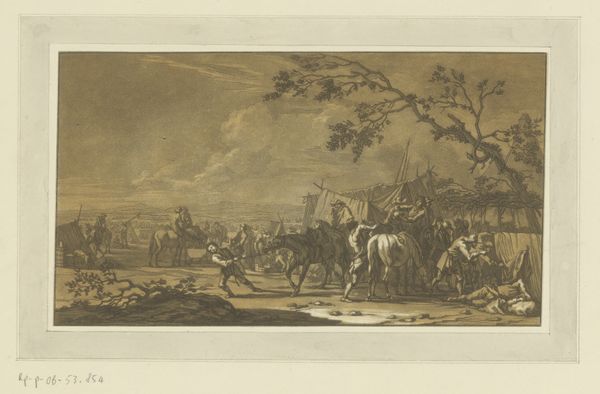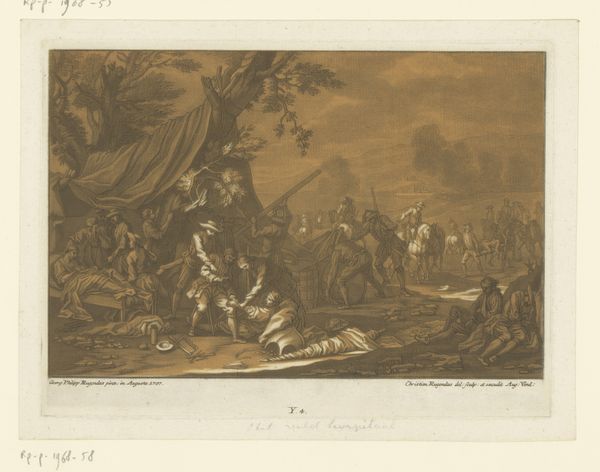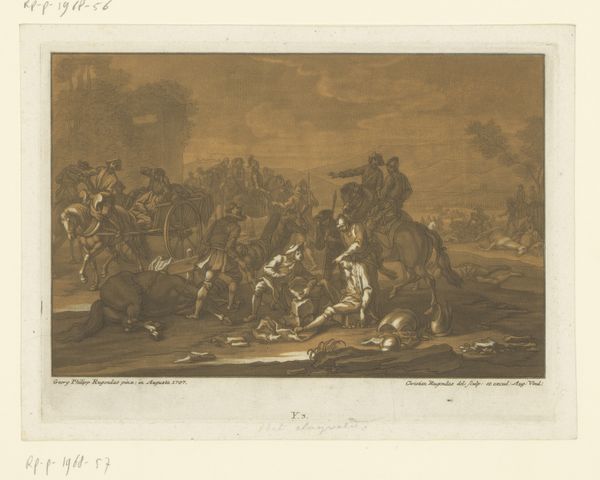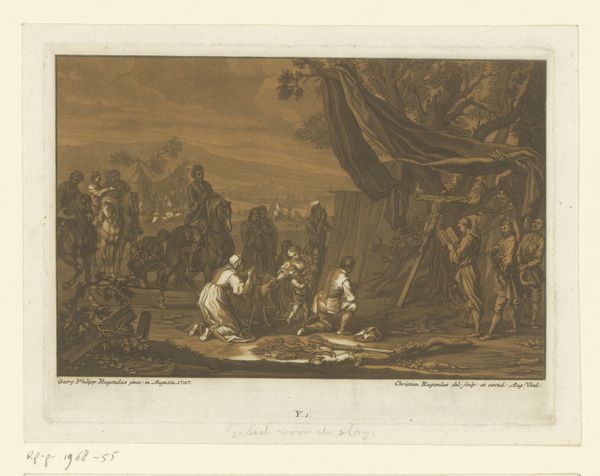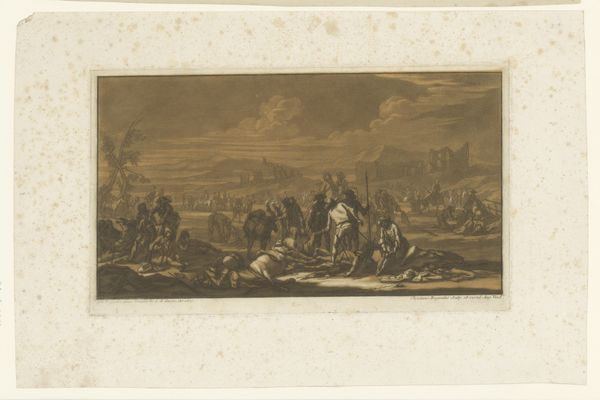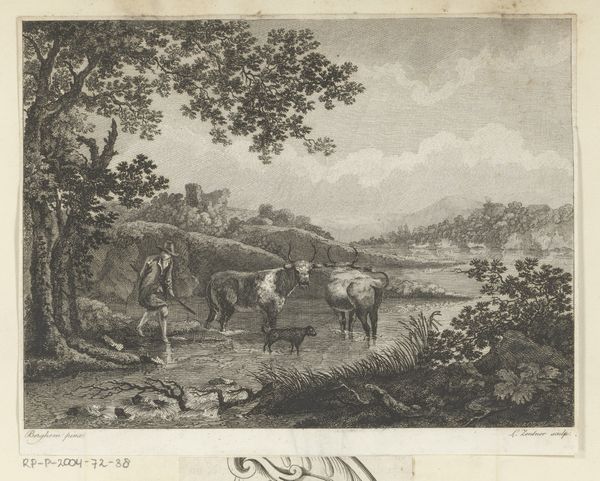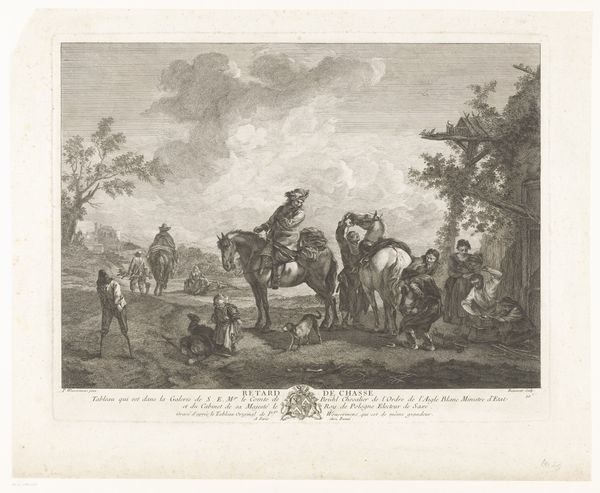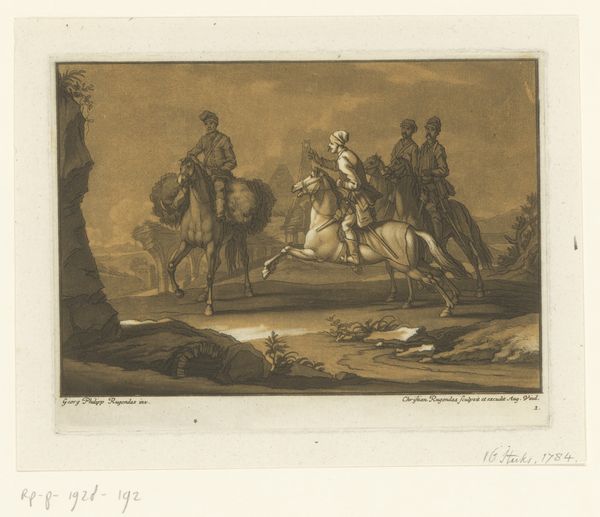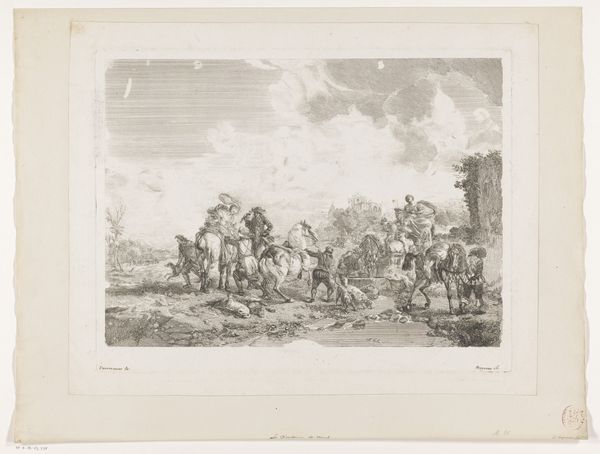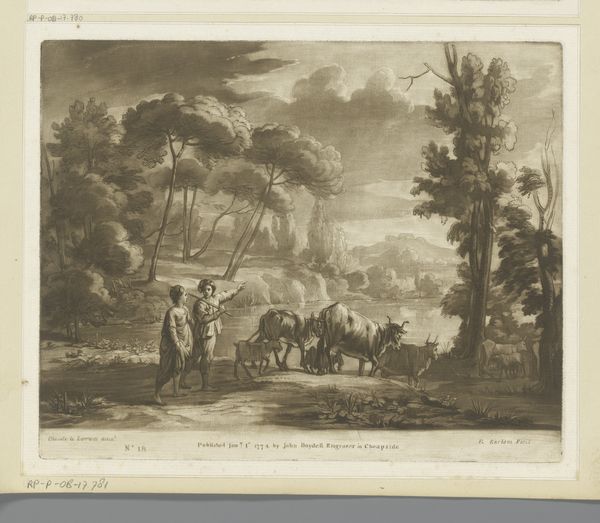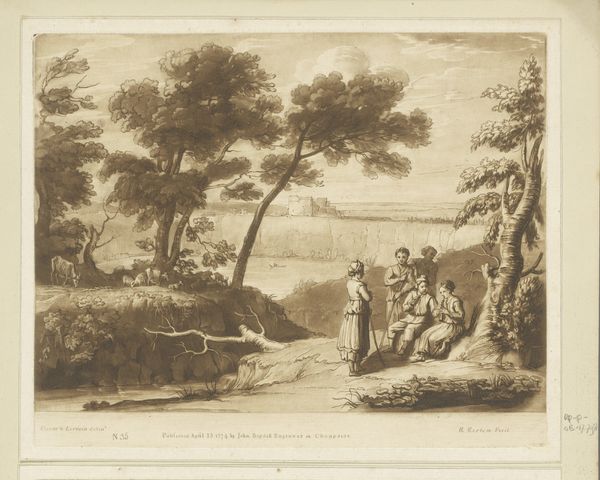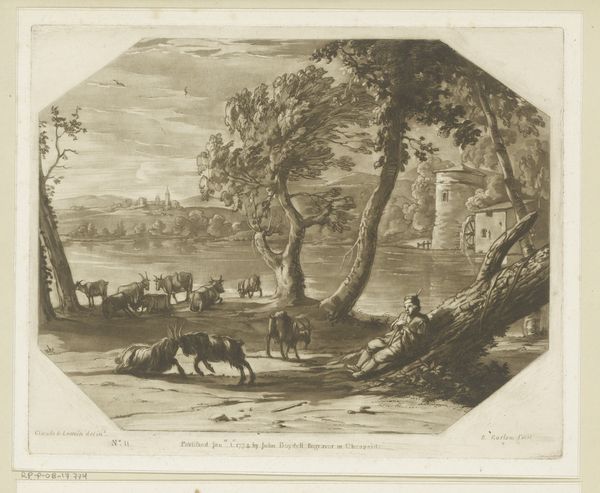
drawing, paper, ink
#
drawing
#
baroque
#
landscape
#
paper
#
ink
#
watercolour illustration
#
genre-painting
#
history-painting
Dimensions: height 165 mm, width 295 mm
Copyright: Rijks Museum: Open Domain
Curator: Good day. We are looking at "Verzorgen van de gewonden na de veldslag," or "Caring for the Wounded After the Battle," a drawing on paper rendered in ink by Christian Rugendas, dating sometime between 1718 and 1781. Editor: Immediately, the drawing strikes me as brutally melancholic. The landscape itself seems to sigh under the weight of so much human suffering, despite its small scale. Curator: Rugendas indeed conveys a certain weight, a kind of universal exhaustion, beyond just the physical suffering of the soldiers. Consider how genre and historical painting are intertwined. We have what seems like a straightforward battlefield scene, yet notice the baroque techniques – the dynamism, the attention to emotionality. Editor: For me, the process here is particularly resonant. We see the battlefield depicted through ink on paper – fragile materials describing violence. The creation process seems intentionally muted, reflective. You have the very delicate rendering of these men juxtaposed with their physical agony – and that’s what strikes you most. Curator: Exactly. The cultural memory embedded in war imagery often overlooks the individual. Rugendas centers on precisely those details. Note the symbolic weight, how, despite the apparent chaos, there's a very deliberate arrangement suggesting both the immediate aftermath of battle and an allusion to wider historical trauma. The tree could be an ancient witness. Editor: It’s all deliberately arranged, I agree. There is the very prominent location of that tilted wheelbarrow there…suggesting disrupted work, damaged tools. How much of war relies on such simple mechanisms of transport, or in helping hands? How the production and movement of supplies is integral to these scenes of utter destruction? Curator: Absolutely. And consider the deeper resonance – it calls into question what victory truly signifies, not only for those who were there on that very day, but also how wars continue to reverberate throughout society through visual symbolism. The drawing then transcends historical record; it serves as an archetypal vision. Editor: In that sense, thinking of the tangible and very present damage that occurs through even seemingly bloodless media, allows us to view how labor, representation, and historical realities always inevitably bleed together, not just in the aftermath. A reminder, I think, of our roles today. Curator: Indeed. A powerful and timeless commentary that reminds us to observe all perspectives. Editor: Agreed. Thank you for elucidating it, today.
Comments
No comments
Be the first to comment and join the conversation on the ultimate creative platform.
